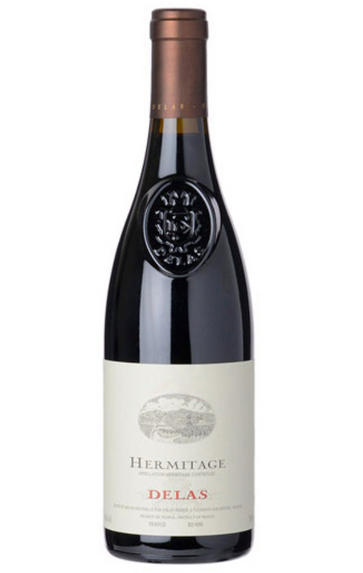
2009 Hermitage Rouge, Domaine des Tourettes, Delas Frères, Rhône
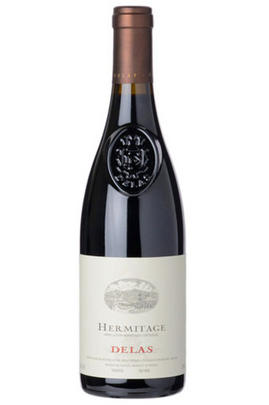
Critics reviews
Jeb Dunnuck - 14/09/2015
Another great negociant with significant vineyard holdings, and at the top of their game, is undeniably Delas, owned by the Louis Roederer/Deutz Champagne firm. Since they acquired Delas well over a decade ago, this firm has been under the management of Burgundian Jacques Grange, who has done an outstanding job producing a sensational array of wines.
The 2009s appear to be their finest overall performances to date, and the 2010s are noteworthy successors in a more restrained, mineral dominated, crisper style. Jacques Grange did a fabulous job with his Cote Roties in both 2009 and 2010, the latter being a somewhat more challenging vintage in this appellation. The Hermitage Domaine des Tourettes (until the 2009 vintage, this offering was known as the Hermitage Marquise de la Tourette) is sensational in both 2010 and 2009. Three thousand cases of this cuvee are produced, and the wine is aged in French oak, 50% new.
Robert Parker- Wine Advocate #204 Dec 2012
About this WINE
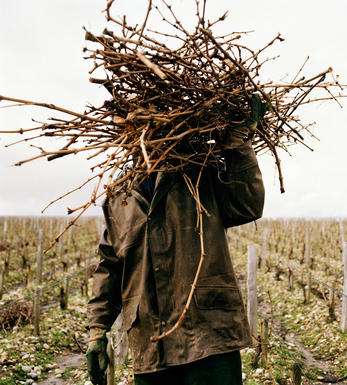
Domaine Delas Freres
Domaine Delas was founded over 160 years ago and was acquired by Champagne House Deutz in 1977. In 1993 Deutz itself was absorbed by Louis Roederer, which today still owns and manages this niche Rhône family domaine. The Doamine cultivates vineyards on the steep granite slopes of the northern Rhône, in some of the region's most prestigious appellations. Additional grapes are supplied through long-term agreements with southern Rhone growers dedicated to providing only top quality grapes.
Crafted by winemaker Jacques Grange (who is originally from Burgundy) to epitomise finesse and elegance, recent vintages from the vineyards of Hermitage, Crozes-Hermitage, Chateauneuf-du-Pape, Côte Rôtie, Condrieu, Côtes-du-Rhône and Côtes-du-Ventoux have won renewed praise for their intensity of flavour and excellent value.
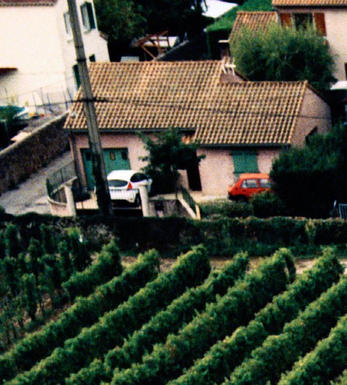
Hermitage
Hermitage is the most famous of all the northern Rhône appellations. The hill of Hermitage is situated above the town of Tain and overlooks the town of Tournon, just across the river. Hermitage has 120 hectares and produces tiny quantities of very long-lived reds.
The vines were grown in Roman times, although local folklore claims their origins to be nearly 600 years earlier. The name ‘Hermitage’ first appeared in the 16th century, derived from a legend of the 13th century Crusade, involving a wounded knight called Gaspard de Stérimberg, who made refuge on the hill, planted vines and became a hermit.
During the 17th century, Hermitage was recognised as one of the finest in Europe. In 1775, Château Lafite was blended with Hermitage and was one of the greatest wines of its day. In the late 19th century, however, Phylloxera wiped out all the vineyards.
The wines are powerful, with a deep colour and firm tannins, developing into some of the finest examples in France, with the potential to age for many decades. The best Hermitage is produced from several climats or more, blended together. The main climats are Les Bessards, Le Meal, L’Hermite, Les Greffieux and Les Diognieres. Most of the finest climats face broadly south, giving maximum sunshine. Most growers only have one or two climats and they might not complement each other; Hermitage quality can therefore vary hugely. Only the top producers have extensive diversified holdings.
80% of the wine produced is red, however up to 15% of white grapes can be used in the blend. Most growers use 100% Syrah and utilise the white grapes to make white wines only. Chapoutier, Jaboulet and Tain l'Hermitage are the principal proprietors of the appellation’s vineyards.
The white wines are made from the Marsanne and Roussanne grapes. Great white Hermitage can age, taking on the fruit characters of apricots and peaches, often giving a very nutty finish. The best examples in great vintages can last 50 years.
Mature red Hermitage can be confused with old Bordeaux. In a blind tasting of 1961 First Growth Clarets, the famous 1961 Hermitage La Chapelle was included. Most people, including its owner, Gerard Jaboulet, mistook it for Château Margaux.
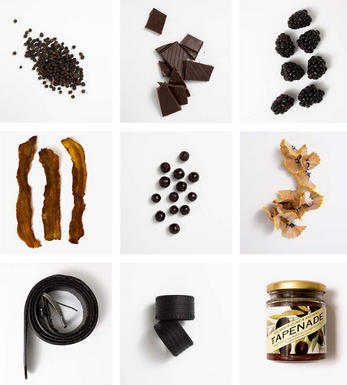
Syrah/Shiraz
A noble black grape variety grown particularly in the Northern Rhône where it produces the great red wines of Hermitage, Cote Rôtie and Cornas, and in Australia where it produces wines of startling depth and intensity. Reasonably low yields are a crucial factor for quality as is picking at optimum ripeness. Its heartland, Hermitage and Côte Rôtie, consists of 270 hectares of steeply terraced vineyards producing wines that brim with pepper, spices, tar and black treacle when young. After 5-10 years they become smooth and velvety with pronounced fruit characteristics of damsons, raspberries, blackcurrants and loganberries.
It is now grown extensively in the Southern Rhône where it is blended with Grenache and Mourvèdre to produce the great red wines of Châteauneuf du Pape and Gigondas amongst others. Its spiritual home in Australia is the Barossa Valley, where there are plantings dating as far back as 1860. Australian Shiraz tends to be sweeter than its Northern Rhône counterpart and the best examples are redolent of new leather, dark chocolate, liquorice, and prunes and display a blackcurrant lusciousness.
South African producers such as Eben Sadie are now producing world- class Shiraz wines that represent astonishing value for money.


Buying options
Add to wishlist
Description
A wine that flirts with perfection is the inky and opaque 2009 Hermitage Domaine des Tourettes. Coming from L'Ermite, le Sabot, and Les Bessards, and aged in a combination of new and used French oak barrels, it gives up a heavenly bouquet of crushed rocks, blackberries, leather, wild herbs and earth. Massively concentrated on the palate, with another level of fruit and texture over the 2010, it has brilliant purity, building tannin and a blockbuster finish. There's enough tannin here to warrant hiding in the cellar for 4-5 years, but it should last for 3-4 decades.
Jeb Dunnuck - 14/09/2015
wine at a glance
Delivery and quality guarantee